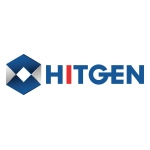CHENGDU, China–(BUSINESS WIRE)–HitGen and Fierce Biotech jointly release the Whitepaper: Advancing Drug Discovery through DNA-Encoded Library (DEL) Technology today. This whitepaper will provide the drug discovery community with an in depth dive of DEL technology and stimulate innovation in the field by describing HitGen’s experiences and knowledges on DEL design, synthesis, screening and expanded applications.
HitGen has practiced DEL technology and served the pharmaceutical industry for about 9 years with very extensive investment in DEL technology related sciences. By now we have synthesized DNA-encoded libraries (DELs) with over 1 trillion compound structures and screened over 41 target classes with approximately 200 targets.
The development of DEL Technology speeds up dramatically in the recent 10 years or so due to its increasing applications and positive outcome in the identification of hits for a wide range of druggable and challenging target classes, such as kinases, transcription factors, membrane proteins, ion channels, scaffold proteins, phosphatases and protein-protein interaction systems.
Advantages of DEL technology
1) Accessing super large chemical spaces: DEL synthesis and screening now are able to reach trillions of small molecules, therefore making it possible for the identification of novel hits for druggable and challenging targets;
2) Much fewer material consumption: it causes much less proteins/targets since the DEL selection of hundreds of billions of compounds can be conducted in a single deep well in an assay plate; it also significantly saves assay reagents;
3) Super-fast: when DELs are made, the DEL screening can be finished in several days, although the compound validation may take several weeks;
4) Very cost-effective: screening cost remains relatively constant irrespective of the library size.
In addition to the traditional use with the above advantages, DEL technology has other applications such as identification of binders for protein degradation, etc. As DEL screening is particularly good in binder discovery with good selectivity and known extension point, it makes it a lot easier to further develop the corresponding PROTAC molecules. Coupled with dual protein pull-down screening, it may directly identify ternary complex formed by Protein of Interest (POI), PROTAC, and E3 ligase. As demonstrated above, DEL potentials in drug discovery and/or other areas are being gradually explored. There is no doubt that DEL technology will create new opportunities in drug discovery, and become an effective and efficient problem solving technology in a variety of applications.
Highlight of the whitepaper
- A variety of new chemical reactions compatible for liquid-phase DNA: are broadening the chemical diversity of DELs. The library types cover conventional molecular libraries, macrocyclic molecular libraries, covalent molecular libraries, protein degradation molecular libraries as well as fragment molecular libraries.
- Focused DELs for specific targets based on SAR information and CADD are used to apply DEL in the make-test-analyze (DMTA) cycle of medicinal chemistry, which can effectively improve the efficiency of hits optimization.
- Open DEL is making the technology accessible in wider ecosystem: DEL synthesis toolkit-DELEZ and DEL screening toolkit-OpenDEL® allow researchers to access DEL technology with the combination of their own expertise and experience in medicinal chemistry.
- DEL screening methods and models are being developed to include covalent screening, protein degradation molecular screening, and cell model-based DEL screening.
- DEL screening process and case studies (traditional hits identification, degrader discovery) are shared to illustrate the breadth and depth of DEL development and applications.
As aforementioned, hit identification usually involves multiple technologies/approaches. HitGen has expanded the hit identification and optimization to include FBDD/SBDD by the acquisition of Vernalis (R&D) Limited. The complementarity of these technologies at HitGen will provide our customers a complete solution in hit identification and hit-to-lead optimization.
To learn more about the whitepaper, please visit https://www.hitgen.com/en or https://fiercebiotech.tradepub.com/free/w_defa1325/prgm.cgi.
To explore more about technologies and services about HitGen’s DNA encoded library, please contact bd@hitgen.com.
Contacts
Sizhou Guo
sz.guo@hitgen.com






















